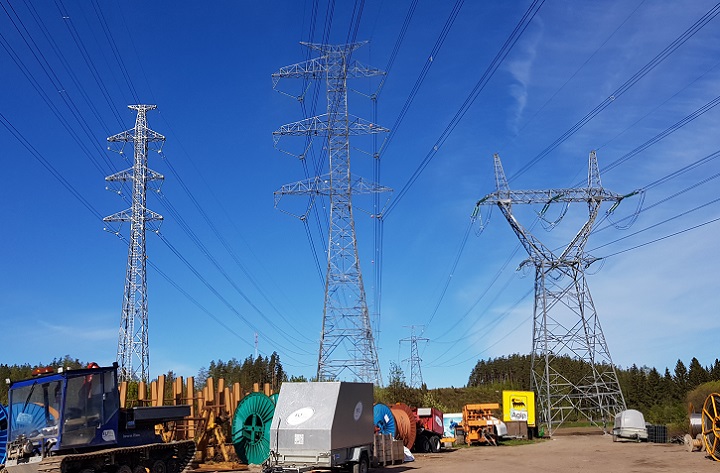Using external companies for work site supervision is an established practice for Fingrid’s investments.
“Our network includes a few dozen people who participate in local supervision in different parts of Finland with varying intensities,” says Jari Helander, Maintenance Manager.
Logistically, it makes sense for local supervision to be conducted by a company operating near the site under construction. The sites are either logistically difficult for our personnel to reach or are in regions where there is a lot of activity at the same time. When there is significant fluctuation in the need for work in a certain area, it makes sense to use external companies. There is no point in resourcing a dedicated regional organisation for peak periods.
“Using partners is not a new idea, but the intensity is now greater. At the same time, we have planned our supervision processes in more depth. For example, we have specified what we expect of the supervisors.”
Local supervision is required at various phases of construction. Supervision is most important at the start and end of a contract, but there are many situations in between where progress depends on the client’s approval.
Toward the end of 2019, construction will begin on the 400-kilovolt Forest Line between the Petäjävesi and Pyhänselkä stations, the 400-kilovolt power line to Oulujoki and the large-scale substation projects related to these lines. Workloads permitting, Fingrid’s personnel will handle local supervision on the sites near where they are based. The local supervision of the Oulujoki substation projects has already been put out to tender, and excavation work has begun. External supervision for the Forest Line was put out to tender during the summer.
Supervisory roles vary depending on the project
The companies conducting supervision are expert organisations – some are one-person companies, but there are also large consultancies among their number. The key factors are an understanding of the construction site and good practices, as well as an ability to work with other parties to achieve a good end result. Familiarity with the special characteristics of transmission network work is also a benefit.
“Contractors have different strengths, and we adapt the use of our own personnel accordingly. The external supervisor conducts a certain part of the supervision, and the proportions are specified individually in each case.”
“We always prepare a risk-based supervision plan depending on the project’s scope and timetable, the complexity of the work and the occupational safety risks before we put anything out to tender. We determine whether the site carries a normal, elevated or high risk. After the tendering process, we reassess the risks in light of the resources available to the selected principal contractor,” says Helander
Effective use of video links
Sitema Oy, a company based in Oulu, won the local supervision tender for the Oulujoki substation projects. The company will make use of technology such as video links to reduce the need for travel.
“Not everyone always needs to be on-site. Direct connections make it possible to intervene immediately in the event of something out of the ordinary, and it is not necessary to specifically photograph situations, send documents and wait for responses,” says Juuso Männikkö, CEO.
In practice, remote supervision means teleconferences, using cameras, looking at pictures and approving plans without any physical presence. Sitema also uses the Quentic software for reporting on occupational safety in its day-to-day work. This software enables information and documents to be transferred between different parties rapidly and reporting to be handled straight away.
The technology itself is nothing new – almost everyone has a smartphone with video capabilities. However, the video camera on a phone is quite difficult to use while working. A method is under development for streaming live video from a device such as a helmet-mounted camera on power line work sites. Modern technology also enables cameras to pan through 360 degrees, controlled by the viewer. In such cases, the viewer is not entirely dependent on the person carrying the camera.
According to Männikkö, the development of such methods is going well alongside other work.
“We use the existing technology. We aim to have a system that is as simple as possible and that can also be used on other sites.”






